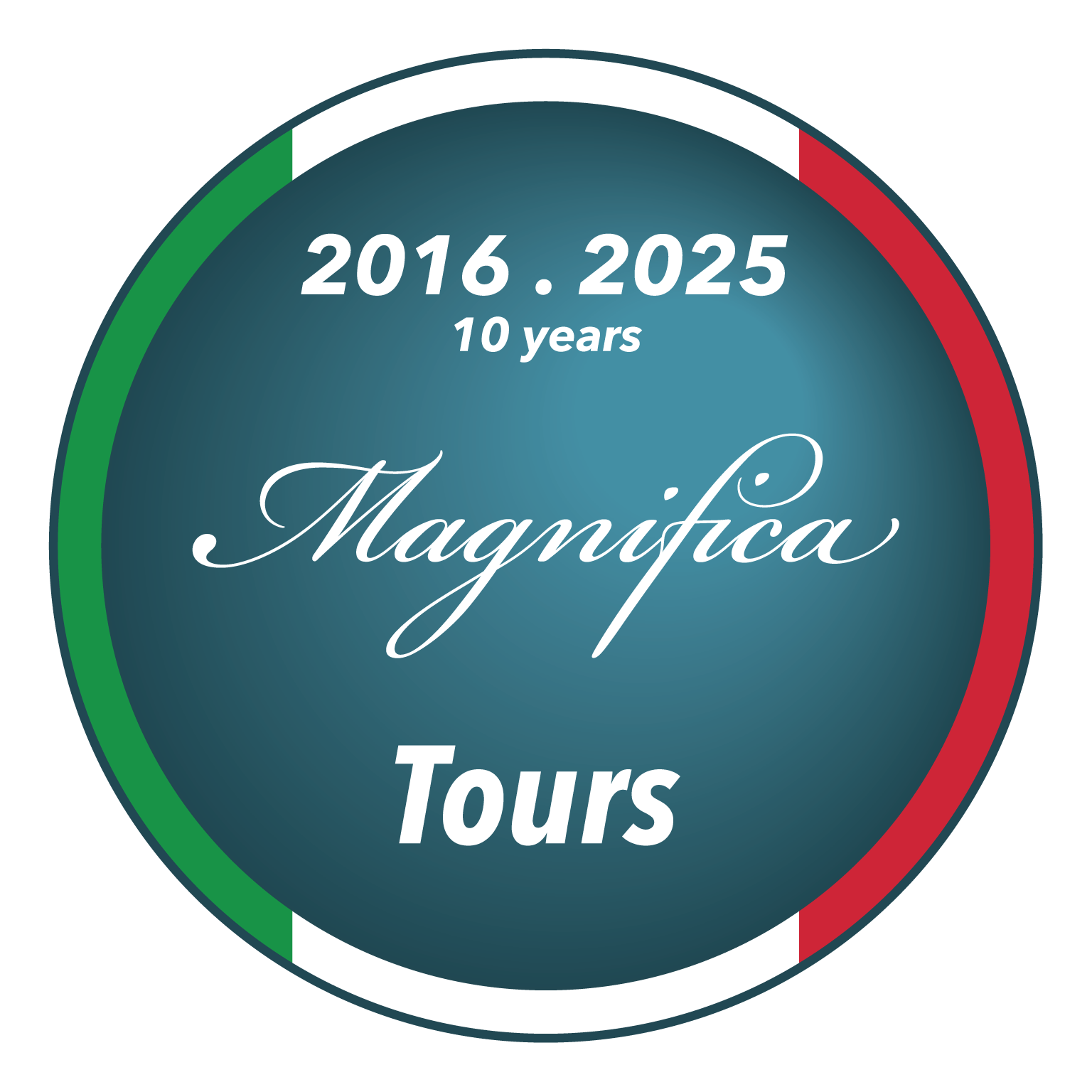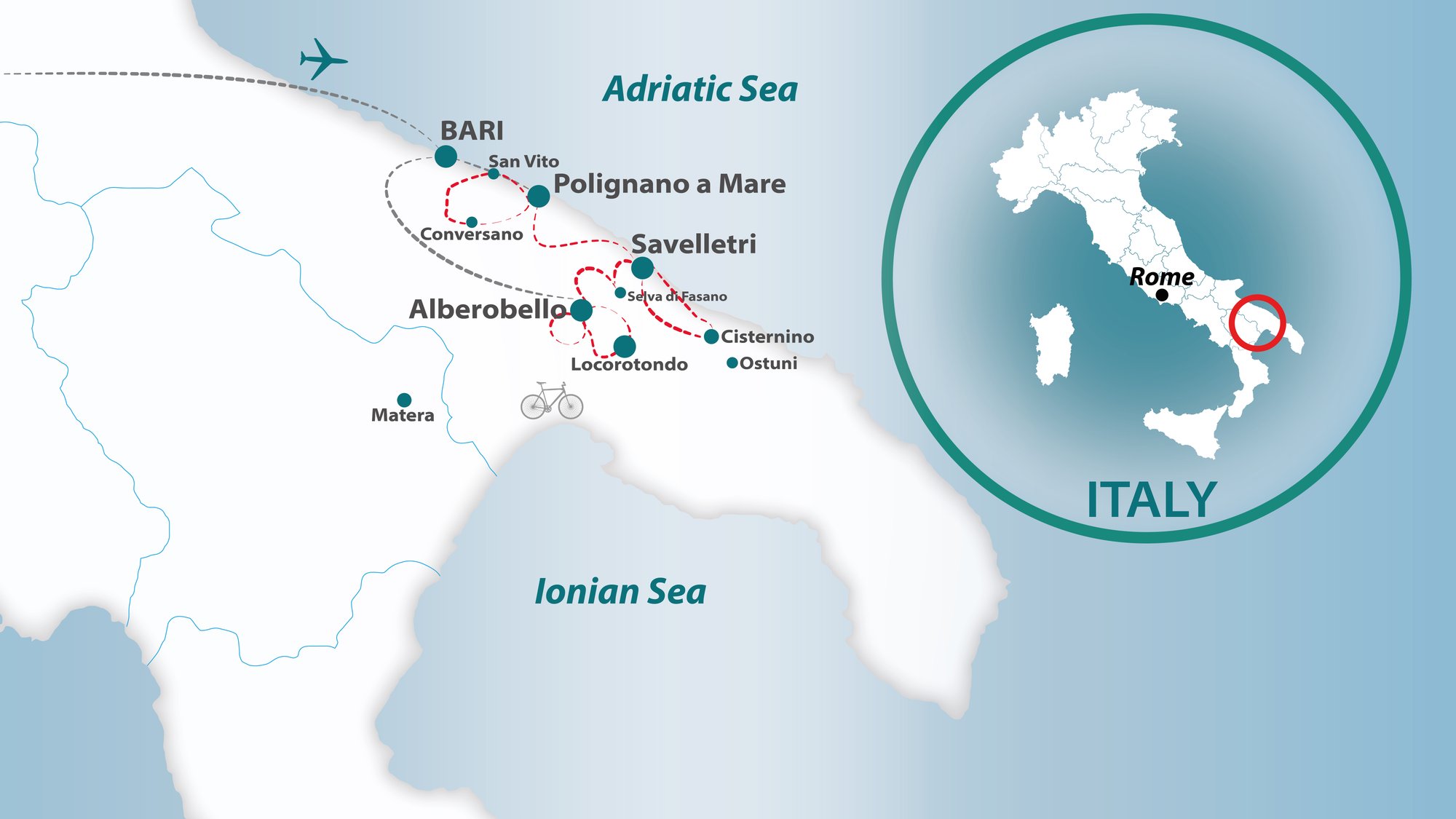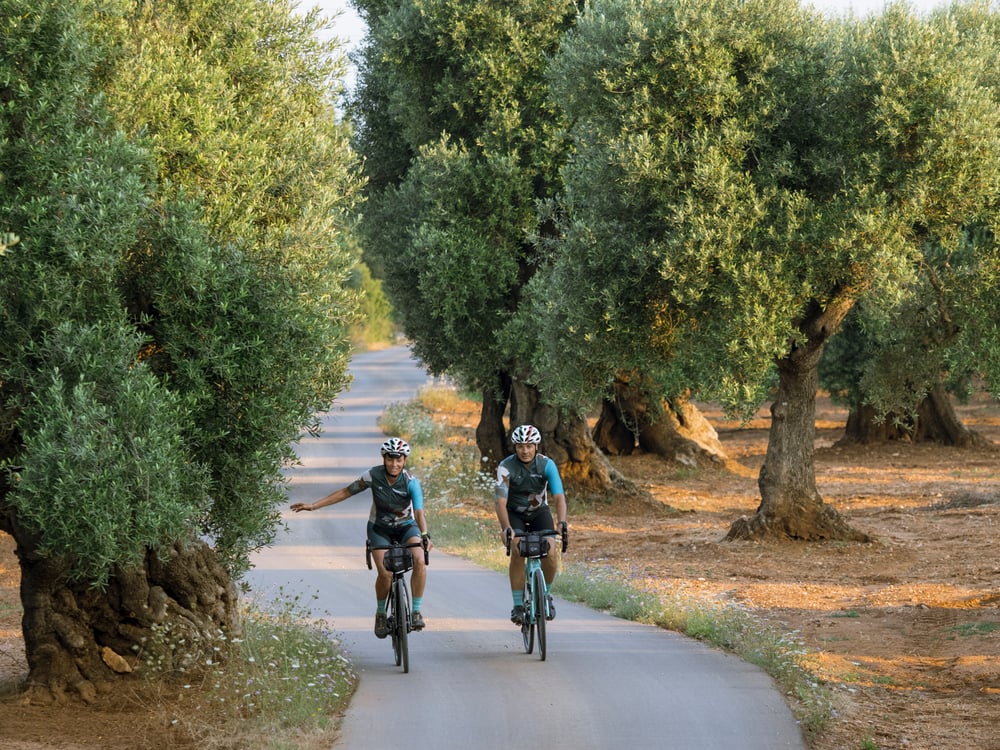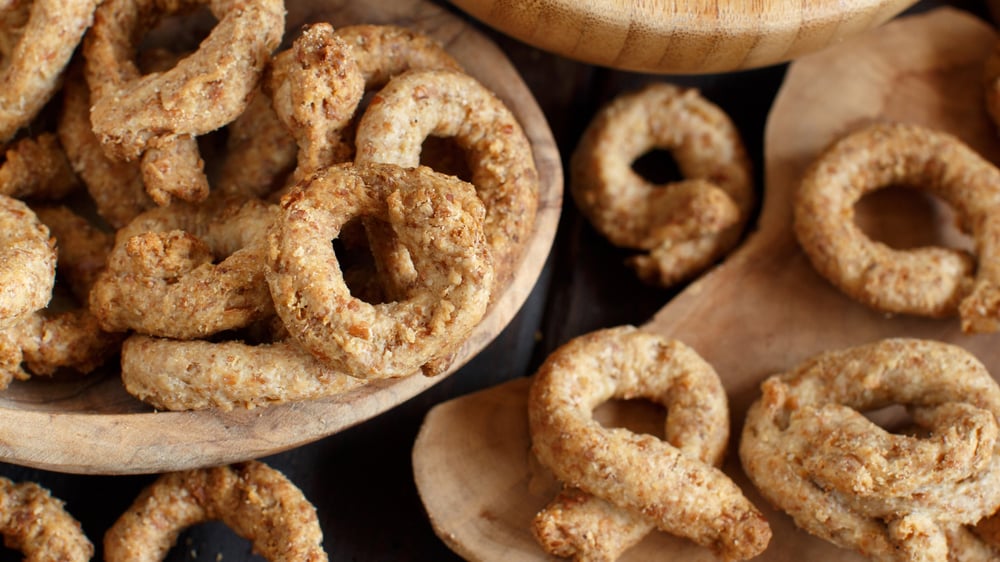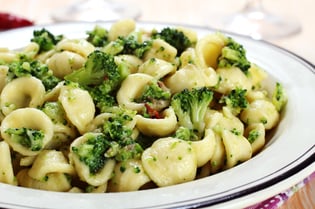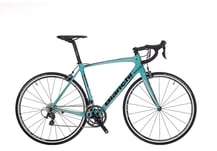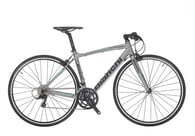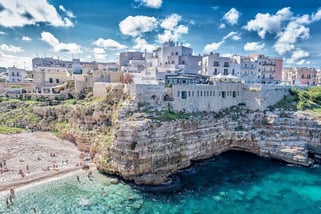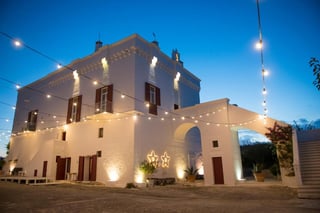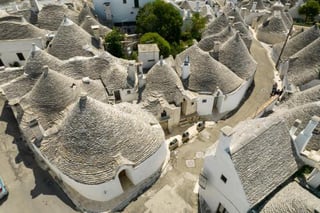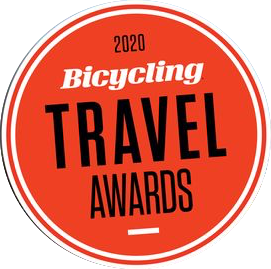Savelletri - Poligano - 25 miles - Hilly
Our destination today is the charming coastal village of Polignano. En route, the landscape is adorned with patches of farmland, where you'll encounter fields of tomatoes, arugula, lettuce, artichokes, broccoli, and fava beans. Sparse almond and fig trees are also part of this peaceful landscape, while olive trees are a constant and reassuring presence.
In the morning we tackle a steady climb, the efforts of which will be duly rewarded by a more leisurely second part of our ride. At the top, we have a mandatory coffee stop in the unpretentious town of Gorgofreddo.
The Mediterranean Sea takes center stage as we approach the final leg of our journey, and there’s no better place than Polignano to enjoy its beauty. Upon arrivL, follow the guides for a stop at the one and only Mago del Gelato.
Sitting on a cliff as high as 70 meters (230 feet), Polignano is a fortified center of Greek origins. Its labyrinthine streets and alleys occasionally lead to scenic lookout points, allowing you to bask in the breathtaking vistas of the coastline and cliffs adorned with caves. The stark white facades of the buildings stand in striking contrast to the deep blue and turquoise hues of the sea.
Next to the city center, the beach of Grotta Piana is worth the short hike.

